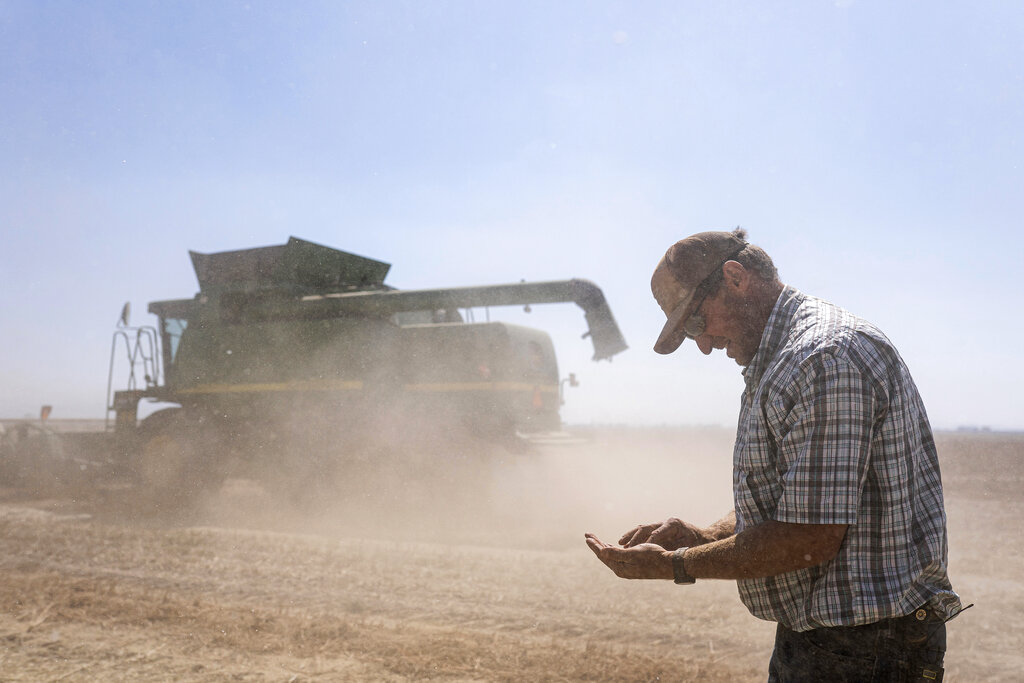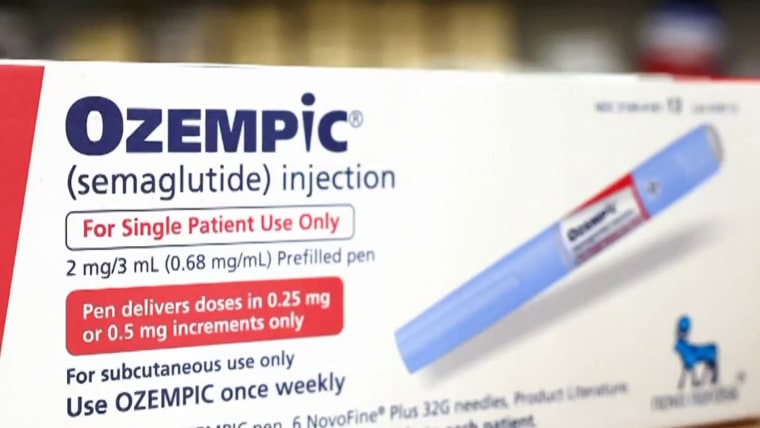Pacific Northwest cherries boomed this season, but for farmers it was more of a bust – Oregon Public Broadcasting – OPB

Report on the 2025 Pacific Northwest Cherry Season: Economic and Sustainability Challenges
1.0 Introduction and Overview
The 2025 cherry season in the Pacific Northwest, encompassing Oregon and Washington, presented a significant paradox. Despite forecasts of a high-quality, high-volume crop, the season resulted in substantial economic losses for farmers. This report analyzes the contributing factors, including labor shortages, market dynamics, and food system inefficiencies, with a specific focus on their alignment with the United Nations Sustainable Development Goals (SDGs).
2.0 Production Forecast vs. Market Reality
Initial projections for the season were highly optimistic, creating an expectation of economic prosperity that supports SDG 8: Decent Work and Economic Growth.
- High-Quality Fruit: The cherries produced were noted for their excellent quality in taste and appearance.
- Increased Production Volume: Production was forecasted to increase significantly compared to the previous year.
- Oregon: 4% increase
- Washington: 29% increase
- Market Failure: A combination of oversupply and insufficient consumer demand led to a market bust, undermining the potential for economic growth.
3.0 Key Challenges and Implications for Sustainable Development
Several critical challenges emerged during the season, directly impacting progress toward key SDGs.
3.1 Labor Shortages and Social Equity (SDG 8 & SDG 10)
A critical labor shortage at the beginning of the harvest season was a primary disruptive factor. This issue highlights challenges related to SDG 8: Decent Work and Economic Growth and SDG 10: Reduced Inequalities.
- Cause: Migrant farmworkers, who typically follow the harvest season north from California, were deterred by aggressive immigration enforcement policies.
- Impact: The delay in labor availability meant that the harvest window for some cherry varieties passed, leaving the fruit unpicked.
- SDG Relevance: This situation underscores the vulnerability of migrant labor forces and the economic disruption that occurs when decent work conditions and security are not ensured, directly conflicting with the aims of SDG 8 and SDG 10.
3.2 Food Loss and Supply Chain Inefficiency (SDG 2 & SDG 12)
The combination of labor shortages and market imbalances resulted in significant food loss, a direct contradiction to the principles of sustainable production and consumption.
- On-Farm Waste: A substantial amount of high-quality fruit was left to rot in orchards. This outcome is in direct opposition to SDG 2: Zero Hunger, which seeks to end hunger and ensure access to safe, nutritious food.
- Market Disconnect: A glut of fruit at the farm level did not translate to lower consumer prices. Retail prices remained high (e.g., $6 to $8 per pound), suppressing demand. This points to inefficiencies in the supply chain.
- SDG Relevance: This scenario represents a failure in achieving SDG 12: Responsible Consumption and Production, which calls for substantially reducing food losses along production and supply chains.
4.0 Economic Consequences and Farmer Viability (SDG 1 & SDG 8)
The financial outcome for cherry farmers was dire, threatening their livelihoods and the economic stability of the regional agricultural sector. This directly impacts goals related to poverty and economic growth.
- Financial Losses: It is projected that most cherry farmers will not break even for the season, instead facing significant financial losses. Farm-gate prices were estimated to be less than one dollar per pound.
- Threat to Livelihoods: The economic unsustainability is forcing farmers to consider reducing their operations by selling or leasing acreage.
- SDG Relevance: These financial hardships jeopardize SDG 1: No Poverty for farming families and undermine the objective of sustained, inclusive, and sustainable economic growth as outlined in SDG 8.
5.0 Conclusion: A Systemic Failure in Sustainable Development
The 2025 cherry season in the Pacific Northwest serves as a case study in the interconnectedness of the Sustainable Development Goals. The failure to ensure stable and fair conditions for labor (SDG 8, SDG 10) directly contributed to food loss (SDG 2, SDG 12), which in turn created severe economic hardship for producers (SDG 1). Addressing these systemic weaknesses is essential for building a resilient and sustainable agricultural system that supports both people and the economy.
Analysis of Sustainable Development Goals in the Article
1. Which SDGs are addressed or connected to the issues highlighted in the article?
The article highlights several interconnected issues related to agriculture, labor, and economics that directly align with the following Sustainable Development Goals (SDGs):
- SDG 2: Zero Hunger: This goal is relevant because the article discusses agricultural production, the economic viability of farmers, and food loss. The inability of farmers to harvest and sell their crops profitably threatens the stability of the food supply chain and the livelihoods of those who produce the food.
- SDG 8: Decent Work and Economic Growth: The core of the article revolves around a “shortage of migrant workers” due to fear of “aggressive immigration enforcement” and the subsequent economic “bust” for cherry farmers who are facing significant financial losses. This directly addresses issues of labor rights, secure work environments, and the economic health of a key industry.
- SDG 10: Reduced Inequalities: The article touches upon the vulnerability of migrant farmworkers. Immigration policies that instill fear prevent these workers from traveling for employment, highlighting inequalities in how different groups are affected by national policies and their lack of a secure status.
- SDG 12: Responsible Consumption and Production: A major theme is the inefficiency in the food supply chain. The article describes an “oversupply of fruit,” market failure where “the market was not there,” and significant food loss as a result, with some of the crop being “left to rot in the field.”
2. What specific targets under those SDGs can be identified based on the article’s content?
Based on the issues discussed, the following specific SDG targets can be identified:
-
Target 2.3: Double the agricultural productivity and incomes of small-scale food producers.
- The article shows a negative trend in relation to this target. Despite high-quality fruit and increased production (“up by 4% compared to last year in Oregon. Washington’s was even higher at 29%”), farmers’ incomes are plummeting. The article states that “most cherry farmers this year will likely not break even” and will be “coming out of this at a loss.”
-
Target 8.8: Protect labour rights and promote safe and secure working environments for all workers, including migrant workers.
- The article implies a failure to meet this target. The “aggressive immigration enforcement” created an insecure environment for migrant farmworkers, who were “afraid they would get pulled over or arrested.” This fear directly prevented them from accessing work, demonstrating a lack of a secure working environment.
-
Target 10.7: Facilitate orderly, safe, regular and responsible migration and mobility of people.
- The situation described is the opposite of this target. The fear of deportation disrupted the regular mobility of migrant workers who “usually follow the harvest season.” This lack of orderly and safe mobility led to a critical labor shortage at the beginning of the harvest.
-
Target 12.3: By 2030, halve per capita global food waste at the retail and consumer levels and reduce food losses along production and supply chains, including post-harvest losses.
- The article provides a clear example of post-harvest loss. Due to the initial labor shortage, “the harvest window for some cherries had passed, and some of it was left to rot in the field.” This represents a significant food loss at the production stage of the supply chain.
3. Are there any indicators mentioned or implied in the article that can be used to measure progress towards the identified targets?
Yes, the article mentions or implies several qualitative and quantitative indicators that could be used to measure progress:
-
Income of food producers (Target 2.3): The article provides specific financial details that serve as indicators of farmers’ economic well-being.
- The price farmers receive: “less than a dollar per pound for fresh cherries.”
- Profitability: The statement that farmers “will likely not break even” and will face “a loss this year.”
-
Food loss percentage (Target 12.3): The article directly points to food loss as a key issue.
- An implied indicator is the volume or percentage of the cherry crop that was “left to rot in the field” because it could not be harvested in time.
-
Labor availability and mobility (Targets 8.8 and 10.7): The impact of policy on the workforce is a central theme.
- An indicator is the “shortage of migrant workers” at the start of the season, which could be measured by comparing the number of available workers to the number needed.
-
Market price and demand mismatch (SDG 12): The article highlights a disconnect between farm prices, retail prices, and consumer demand.
- Indicators include the high retail price (“$6 to $8 a pound”), which contributed to “less demand for the fruit,” despite an “oversupply” and low prices for farmers.
4. Summary Table of SDGs, Targets, and Indicators
| SDGs | Targets | Indicators Identified in the Article |
|---|---|---|
| SDG 2: Zero Hunger | 2.3: Double the agricultural productivity and incomes of small-scale food producers. |
|
| SDG 8: Decent Work and Economic Growth | 8.8: Protect labour rights and promote safe and secure working environments for all workers, including migrant workers. |
|
| SDG 10: Reduced Inequalities | 10.7: Facilitate orderly, safe, regular and responsible migration and mobility of people. |
|
| SDG 12: Responsible Consumption and Production | 12.3: Reduce food losses along production and supply chains, including post-harvest losses. |
|
Source: opb.org

What is Your Reaction?
 Like
0
Like
0
 Dislike
0
Dislike
0
 Love
0
Love
0
 Funny
0
Funny
0
 Angry
0
Angry
0
 Sad
0
Sad
0
 Wow
0
Wow
0
















































:focal(1500,1000)/https://media.globalcitizen.org/a6/9a/a69a4720-d8a1-4715-b596-18738d03c05c/rotary_polio_hero_image.jpg?#)







/countries/sri-lanka/photo-credit---dmc-sri-lanka.tmb-1200v.jpg?sfvrsn=dc298bcc_1#)



















